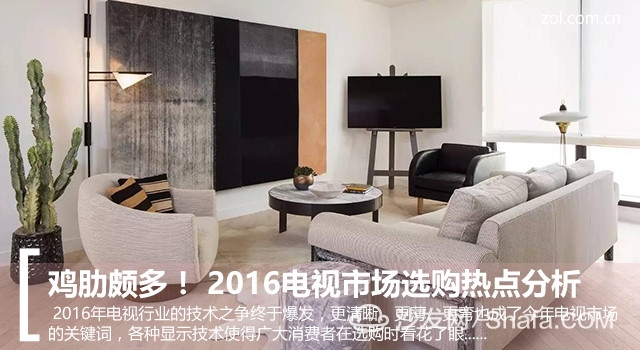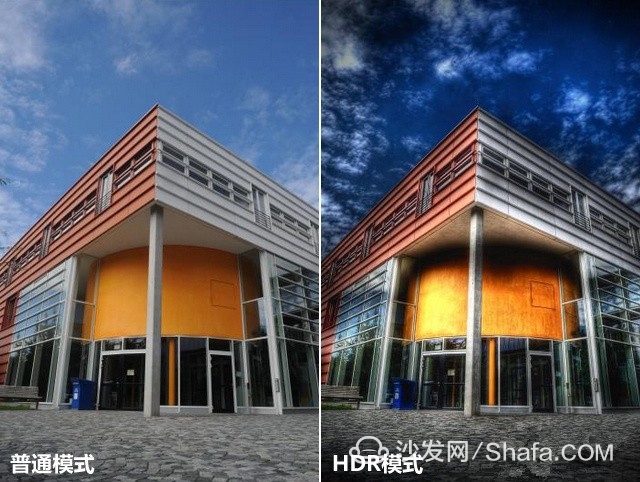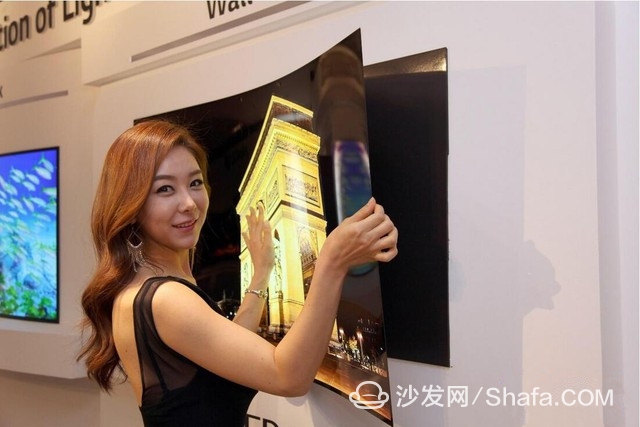In 2016, a large number of characteristic smart TV products flocked to the market. 4K, 8K, HDR, Quantum dots, OLED, AR, curved surface, laser television and a series of products appeared in front of users, and the competition between major TV companies has also intensified. How to buy a smart model that suits itself but has its own characteristics? Bringing a big inventory of buying points in the TV market, introducing what you need to pay attention to when buying TV.
TV is a traditional electronic technology product. Its development path has been for decades. However, as an essential part of the living room in a home, it has been constantly undergoing innovation and evolution in the development of its technology. Bigger, thinner, and clearer have become the direction of television development now and in the future. And now that TV prices are getting lower and lower, consumers can buy a large-sized TV product with little money.
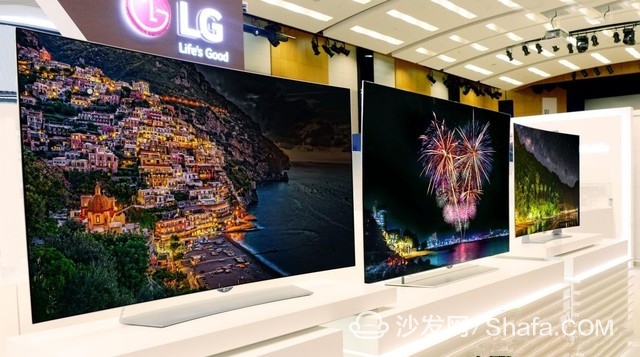
TV products develop in a bigger, thinner, clearer direction
As the core of today's television ecosystem, the new TV technology has become one of the selling points of major TV manufacturers. So, can these TV technologies really bring breakthrough improvements to picture quality or bring new visual experiences to users? In view of the current hot spots in the TV market, we will take a look at these TV technologies and see whether they are bearish or tasteless. In the end, it is not worth buying.
What are the advantages of 4K TV? Is it necessary to buy it?
4K is no stranger to the majority of consumers, and it cannot even be said to be a new display technology. Currently, 4K television has gradually entered the homes of ordinary people, but as a revolutionary breakthrough in the display technology of the television industry, 4K has become an industry. The evergreens in the area have been increasing since the beginning of 2012. 4K refers to a TV with a resolution of 3840×2160. On a display screen with a unit area, 4K is 4 times that of 1080P pixels. The brightness and sharpness of the screen will give the user unprecedented visual impact. The delicateness of the picture will be qualitatively improved.

4K resolution greatly improves the fineness of the picture
But in order to really see the 4K resolution of high quality, in addition to 4K TV, it is 4K source. The 4K source is now very poor, far from keeping up with the rhythm, and usually the cable TV signals we see at home are only 460P, and some paid HD channels only reach 720P at the most, so for now, we want to achieve The overall popularity of 4K sources is still more difficult.
Let me say that the speed limit, the current television more and more intelligent, users can watch movies and TV programs through the Internet, many TVs also come with 4K area, which also has a lot of movies, TV drama sources, but the author found through actual testing, real There are few sources that can achieve 4K image quality. Currently, most of the videos that can be seen through the Internet are 1080P or even lower quality videos.
4K video broadband requirements
The optimal frame rate for viewing 4K set by the ITU ITU is 120 Hz, and the minimum color coding is 10-bit, otherwise, it cannot be regarded as a true 4K. Whether it is fixed network or wireless, it can not meet the requirements of 4K. The 4K, 10-bit color depth that meets the 60Hz frame rate, and the access bandwidth requirement is more than 50M. Of course, there is also a premise that there must be a corresponding source. At present, there are few mature domestic manufacturers that can produce 4K videos. Of course, perhaps with the maturity of the 4K codec technology, 4K at 60 Hz frame rate will gradually reduce the bit rate and bandwidth requirements. So if there are really 4K sources, the only remaining choice is only 4K 30 frames, and the network bandwidth is the lowest 30M, otherwise it is difficult to guarantee the stability and clarity of the viewing.
People are talking about 4K and pursuing 4K, but we can see very little 4K content. Judging from the current development trend, it may take some time for 4K to fully popularize in China.
How about HDR TV? What is HDR technology? Is it useful?
HDR technology is the hottest display technology this year. In simple terms, HDR is a high dynamic image quality range enhancement technology. By adjusting the brightness of the screen, the contrast between the brightest and darkest images is improved, making the picture more vivid and layered. Stronger. Compared with ordinary SDR content, better coverage of the color gamut and increased contrast are achieved, and a better light and dark display effect is achieved, brightness is appropriately reduced at an excessively low exposure, and brightness is increased at an excessively dark place.

Attentive friends can feel that when everyone has not yet understood what HDR really means, many TV manufacturers have already begun to fully distribute goods. TVs in almost overnight stores have become HDR TVs. Although HDR technology can greatly improve the picture quality, as with 4K, HDR format video can be very few, and only a few are just a few minutes of demonstration source. It also requires a dedicated HDR camera for video capture.
The poor control of HDR technology will make the effect worse
Although HDR technology has some effect on ordinary video sources, the current technology tends to have some negative effects on the screen because HDR brings about an increase in brightness peaks and contrast. Some TV manufacturers even have poor HDR control, even Not as good as the current SDR TV, the effect can only be to make the picture worse. Therefore, in a short period of time, HDR video is still far away from us, far from meeting the daily playback requirements.
Which is more worth buying curved TV and flat TV?
The TV screen is from convex to flat. In the past two years, curved TVs have appeared again, causing consumers to lose their direction again. Technically speaking, this is not too difficult. Almost every brand withdraws from its own curved surface television. Even if they are not bent, they are embarrassed to say that they are high-end products. The manufacturers in their own advertising campaign to vigorously promote "super immersive sense", "more in line with the human eye's viewing habits", then it is like they say so well?
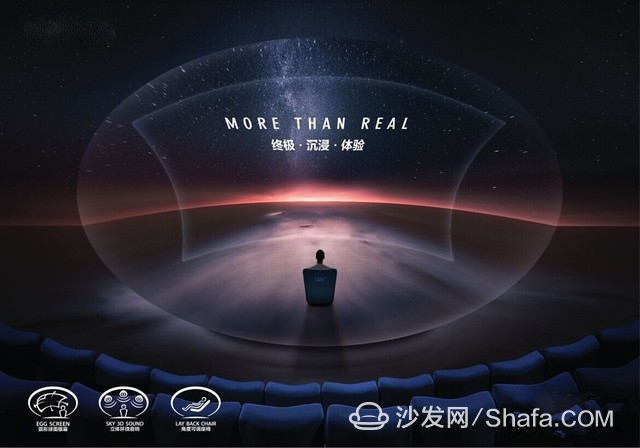
Super immersion surface experience
Indeed, the curved TV allows you to feel wrapped in it, resulting in a stronger immersion experience, better depth of field effects and vision. We all know that the human eyeball is a sphere and the eye mask is also in a curved state, so an object in the plane may actually be bent when imaging through the eyeball. However, the curved TV can eliminate this kind of visually induced bending, which is more in line with the human eye structure to make the eyes more comfortable. When viewing pictures on a curved television, the picture seen is more consistent with the structure of the eyes, and is more in line with humans' audiovisual habits. Such comfort is not provided by flat-screen televisions.
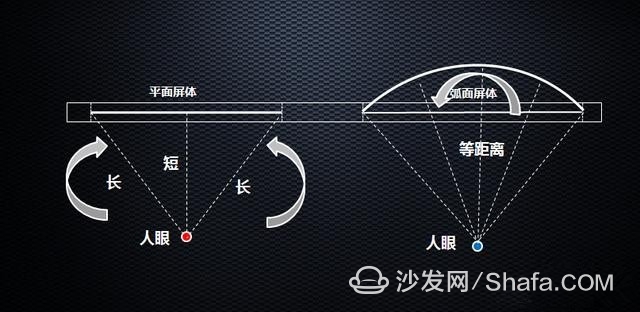
Curved screen more in line with the needs of the human eye
At the same time, the surface also brings some disadvantages. The viewing angle is single and the side viewing effect is still not ideal. The small-size curved TV has no obvious effect and is not beautiful enough to be hung on the wall. These are problems that need to be considered. If you really want to buy a curved TV, I recommend choosing a relatively large size, the general family living room choose 55 inch or more curved surface TV, there will be a very shocking visual experience.
The competition between quantum dot TV and OLED TV is fierce. Who is better?
In recent years, in the TV market, OLEDs have been preached to completely replace LCDs as the display industry leader. However, this year, quantum dots have appeared before us and evolved into a situation where the two are competing. So how should consumers choose to buy it? The liquid crystal has been able to occupy the display industry for more than ten years and has not failed to survive, because the plasticity of liquid crystal is very strong, and many display technologies can be combined with it well, resulting in an incredible reaction, quantum dots is one of them.
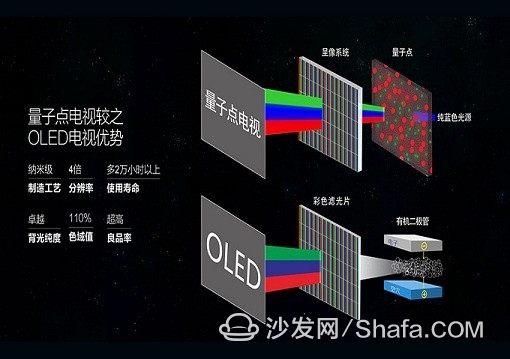
Quantum dot technology is based on the traditional LCD display panel based on the addition of a layer of quantum dot material film, invisible to the naked eye, very tiny inorganic nanocrystals. Whenever it is stimulated by light, quantum dots emit very pure colored light. Backlights using quantum dot materials are the backlights we find most purely today. This gives the display panel a qualitative leap in image quality improvement. Quantum dot technology has also improved many problems such as light leakage and color gamut coverage of LCD display devices. However, after all, there is still a backlight. It is difficult at present to completely eliminate light leakage.
OLED screens are not only thin but also present a variety of forms
As a strong competitor of quantum dots, OLED (Organic Light-Emitting Diode) organic light-emitting diodes are recognized by the industry as a revolutionary display technology and possess physical advantages unmatched by LCD technology. Self-luminous characteristics, color truth, and zero delay , unlimited contrast, extreme ultra-thin, flexible display and other features. Secondly, OLEDs have low voltage requirements, simple structure, high efficiency, and light weight. In theory, as long as the OLED panel is attached to a flexible material, the appearance of the OLED screen can be changed. However, compared with LCD TVs, OLED TVs have a short life, and due to the short board cutting technology, the large-size OLED panel has a relatively low yield, which also leads to the high prices of OLED TVs on the market.
Written at the end:
In 2016, the technology dispute in the television industry finally broke out. Clearer, thinner, and more bent have become the key words for this year's TV market. Various display technologies have made consumers look at it when they are buying. As the user itself, there are often blind people who follow the trend, buy their homes in dimness, and find that they do not like it. There is no best TV, only the most suitable TV, according to their actual needs to buy a suitable for their own, is the best.
Smart TV/box information can focus on smart TV information network sofa butler (http://), China's influential TV box and smart TV website, providing information, communication, TV boxes, smart TVs, smart TV software, etc. Answering questions.
Light Fitting Connectors
It includes Light sources, terminals, sensors, converters, adapters, light boxes, inductive ballasts, electronic ballasts, acrylic accessories, plastic accessories, special lamps, filaments, electronic components, capacitors, brackets, hardware, ceramic parts, Plastic parts, glass parts, die-casting parts, rectifiers, starters, transformers, voltage stabilizers, wires, sockets, plugs, switches, lamp holders, lamp holders, lamp panels, optical fibers, crystal parts, lamp tubes, lamp posts, lamp shades, Base, center pillar, bulb, ballast, bottom plate. According to different protection requirements, there are many small accessories. Such as rubber plugs, eight-shaped buckles, terminals, crimping buckles, pipe plugs, dental pipe screws, gaskets and so on.:Hard wire straight plug, soft and hard wire universal, push type, track type, waterproof series, etc.
Our factory includes PCT41 series Cage Spring Terminal Blocks,CH Series Press Type Terminal Block etc.
PCT41 series Cage Spring Terminal Blocks,CH Series Press Type Terminal Block etc
Ningbo Bond Industrial Electric Co., Ltd. , https://www.bondelectro.com
